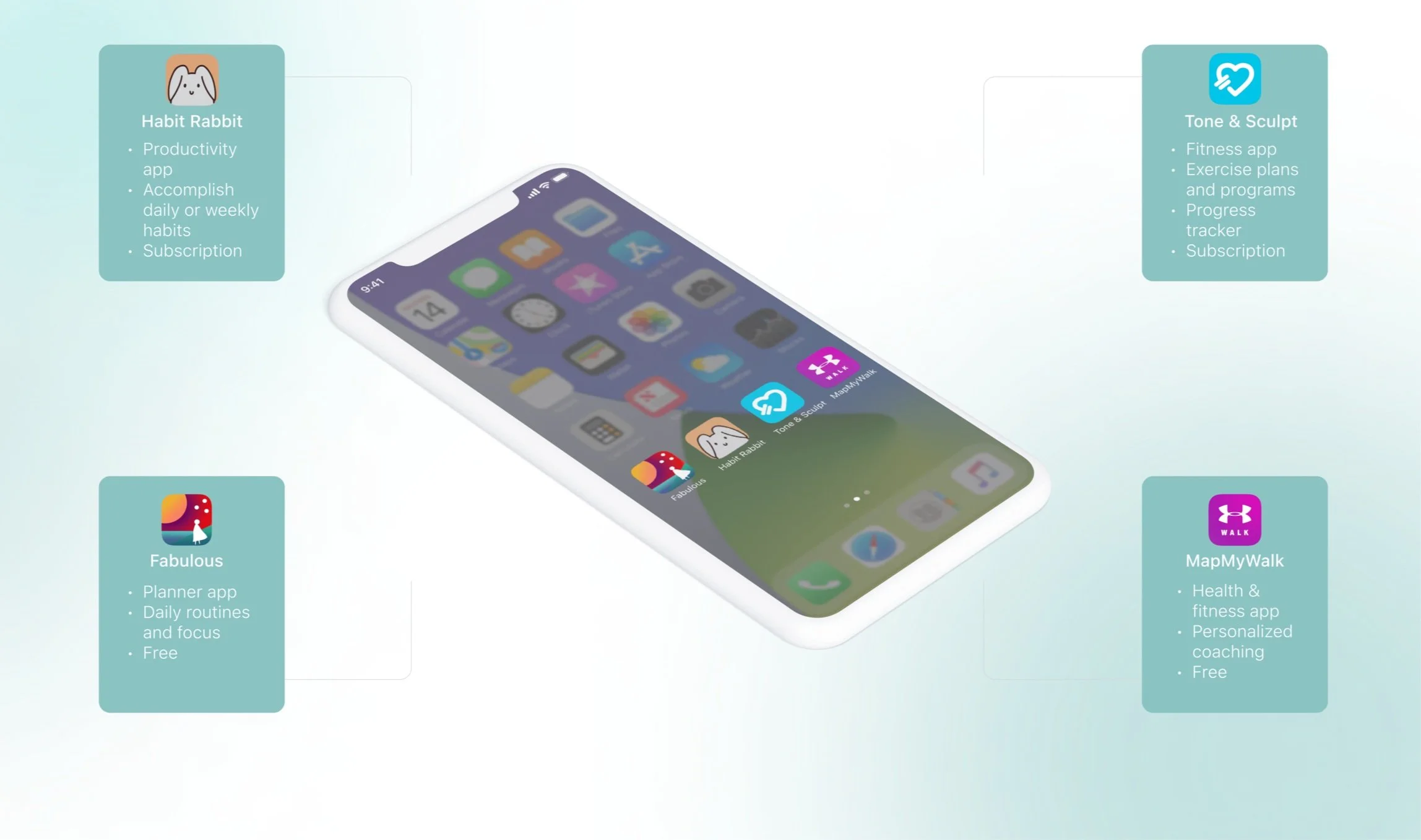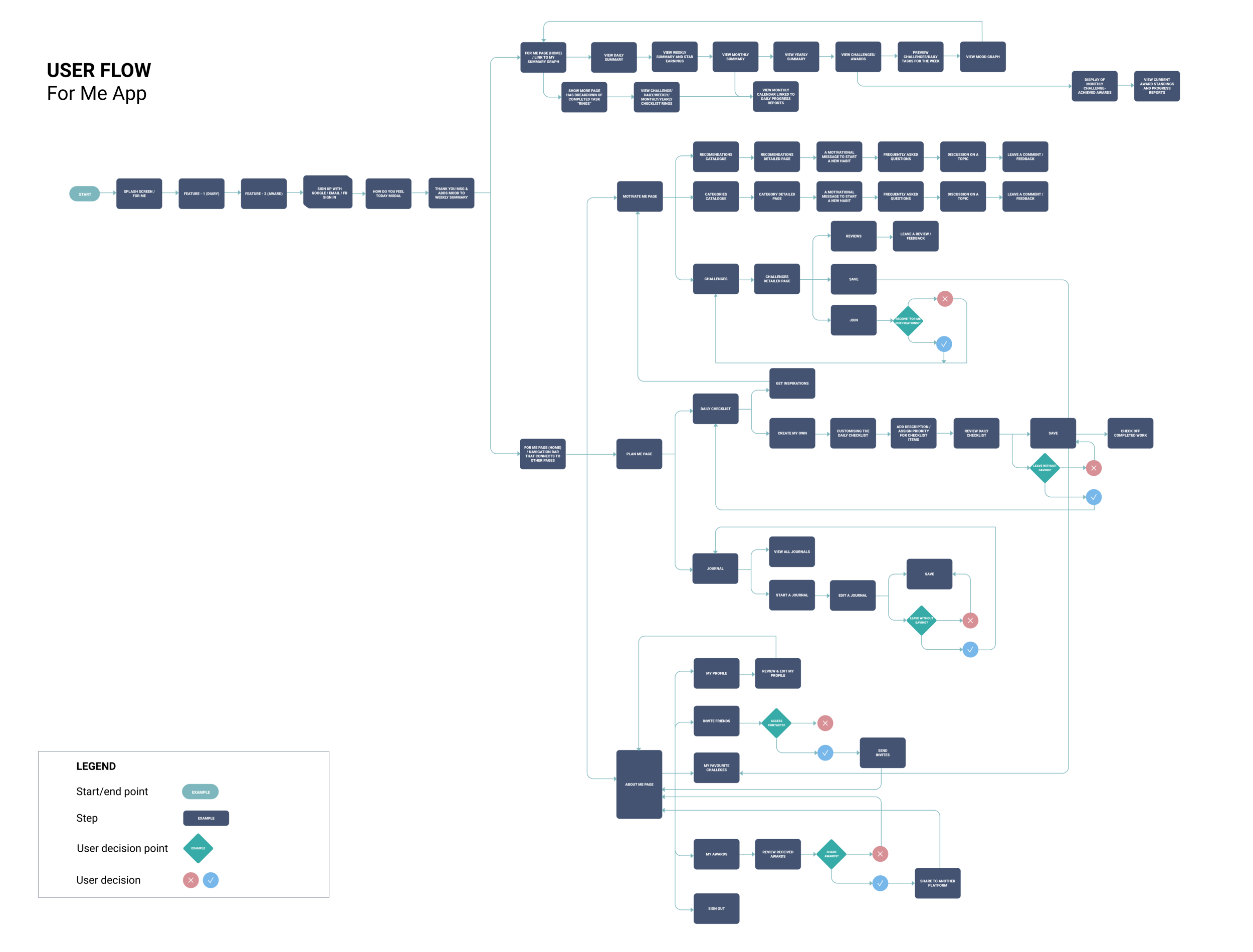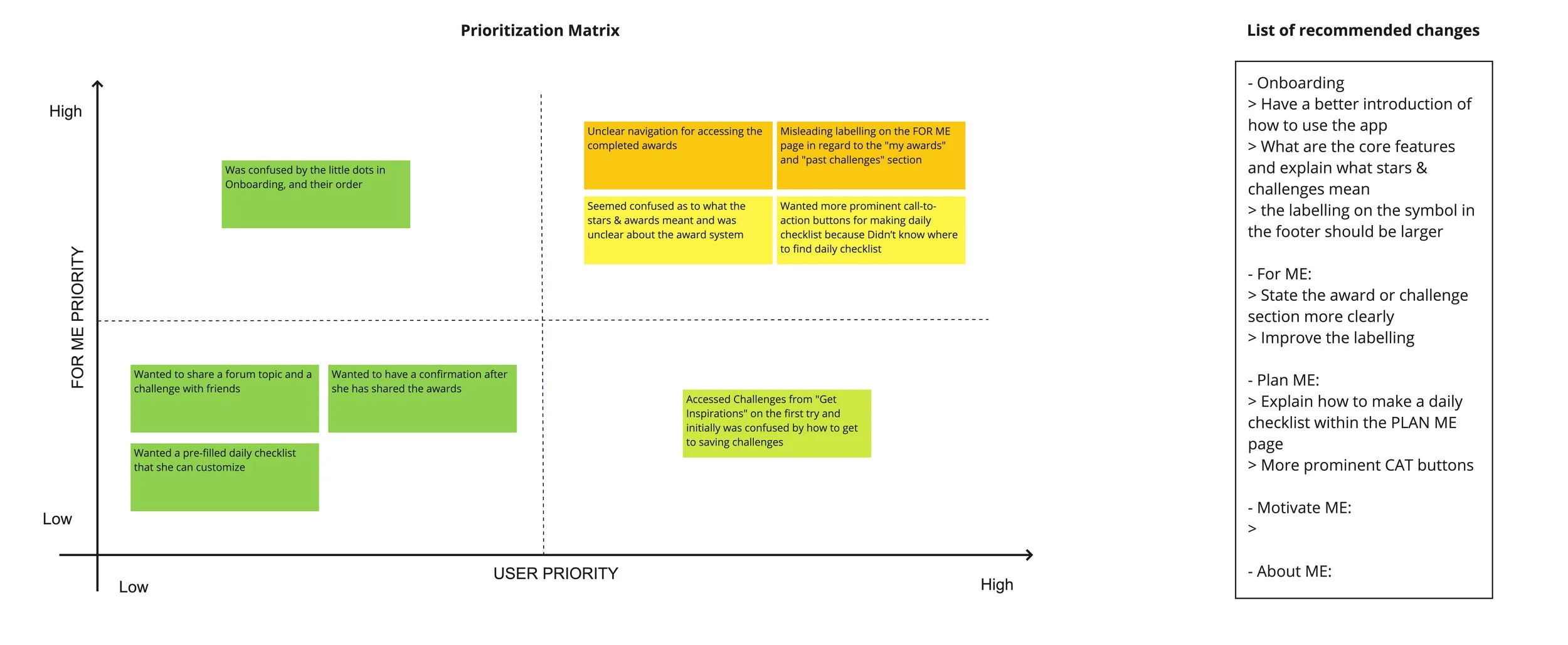Building Sustainable Habits
For Me
Role
Product designer
Platform
iOS mobile app
Year
2021
Problem
The For Me app allows individuals to build healthier and sustainable habits. It does not rely on motivation, but pushes those to fulfill their goals- featuring a diary, checklist, and awards system. Many people struggle with sustaining habits and being productive in their day-to-day life.
Solution
The aim was to initialize a way to hold them accountable for their practices, whether related to health, mindfulness, etc. There is an emphasis on the goals not being restricted to health, as everyone has their pursuits. The For Me app is a tangible resource for support and individual responsibility. The help of daily checklists and monthly challenges aid in achieving goals.
Quantitative research
I surveyed individuals to see how they perceived self-care, such as using a self-care app on their phones. In addition, if they allotted time in the week for themselves. The verdict found that 90% did not use any apps to improve self-care. 60% of individuals spent 1-5 hours per week focusing solely on themselves, 30% less than an hour, and 10% 5-10 hours per week.
Insights
There were 4 interviews conducted to perceive how individuals defined "self-care". Many individuals indicated that they did not have enough time to focus on themselves. Some of it had to be due to the effects of the global pandemic, long work hours, and lack of sleep. Many felt happier when they reached goals related to fitness or health. Their physical health was in alignment with their mental health.
Affinity diagram
I decided to break down categories for our app based on the interview responses. More considerably, areas users felt they needed to take control of their goals and choices. The focus on mental and physical well-being was vital. This resulted in the findings of an app that would provide accountability, consistency, and ritual.
The persona
Mindful Mila, the user, was a representation of my research. She was a young millennial seeking to find the time to balance her career and practice yoga. The altercation was ultimately her time management. Mila needed a plan to improve her health and mindset.
Competitor analysis
User flow
The user flow focused on the navigation of the app itself. More specifically, the app menu bar would divide into 4 categories. The categories were the Motivate Me page (challenges), Plan Me page (checklist and journal), For Me page (homepage), and About Me page (profile settings). These categories each ventured in support of users.
Prototyping
Low-fidelity
I focused on designing the For Me homepage. This area would display progress, daily checklists, habit challenges, and personal data for the user. It provided a lot of insight for the user, all in one place.
Essentially it was a personal record. I focused on presenting quantitative data since users stated it was influential. Visualizing elements such as a graph or chart helped to motivate individuals.
User testing
iOS
After testing the prototype, I discovered errors. The onboarding itself needed a clear explanation. If users could not initially understand the app, then the app would not be successful. The one problem I focused on was the For Me homepage, which needed better labeling. The wording and explanations of my challenges, graphs and data were key in helping users to reach their goals. The app intends to help individuals build better habits and sustain them. My role was to display these habits in an achievable and numerical form, to inspire users.
Design system
The aim was to keep the color palette as soothing and serene as possible for the user. The chosen green tones, like teal and turquoise, provoked that balance.
Apple's SF Pro font display aligns with the design scheme of iOS devices.
Components
Final designs
iOS
Conclusion
To improve wellness and mental health for individuals who struggle in their day-to-day life, the For Me app helps alleviate it. Individuals can journal, plan, challenge and keep track of their habits. Having that visual representation, further pushes those to achieve their pursuits. The iOS app design successfully fulfilled the initial intent for building habits. The most important factor was designing a concept that was realistic and sustainable. Using the objectives of Mindful Mila, she would be able to use the app to plan out her yoga practice and balance her work-life. In the event her goals change, the application is adaptable.
Categorizing areas such as the Motivate Me page (challenges), Plan Me page (checklist and journal), For Me page (homepage), and About Me page (profile settings) were crucial. The 4 categories kept the direction of the app clear and intentional. This application accomplished what it set out to do, and better individual well-being.











